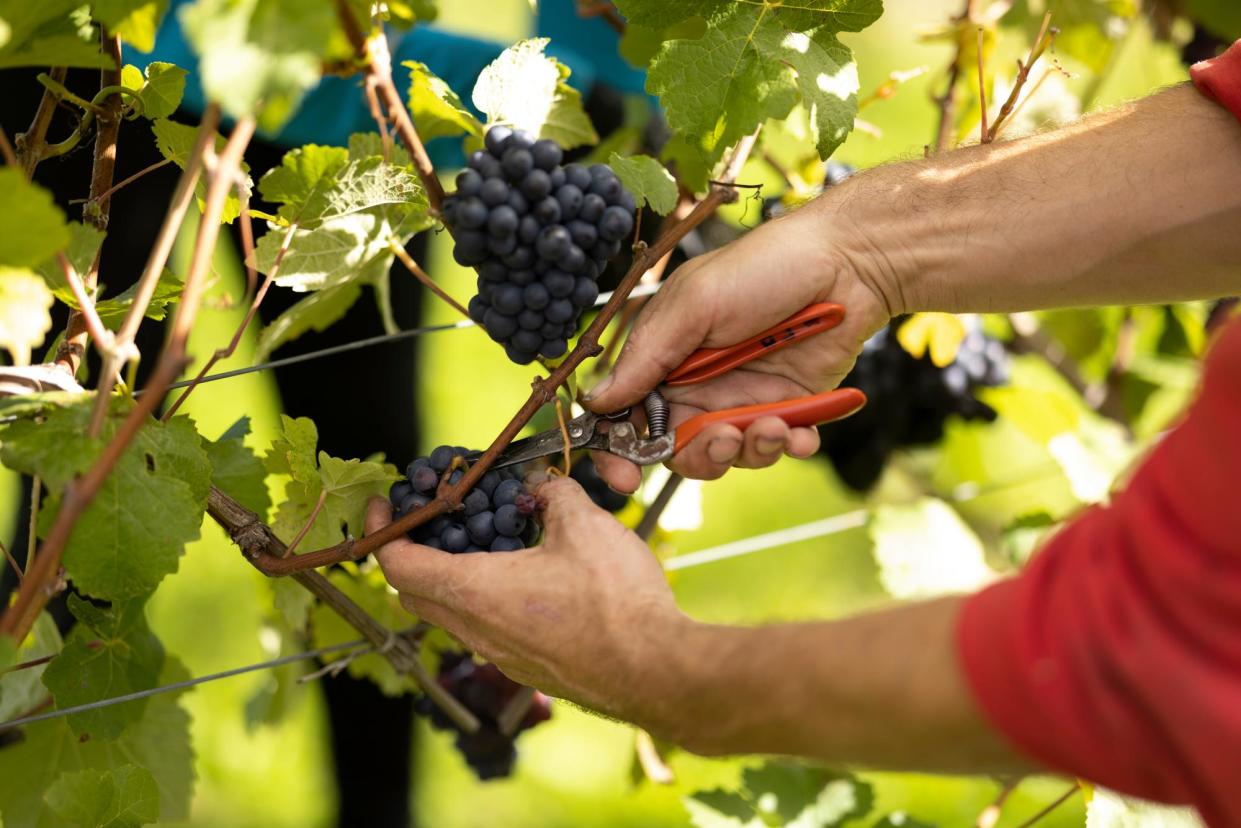Discover light red wines for spring

Although I argued last week that, since Easter was early this year, we should drink as if it was still winter, a week can be as long a time in the wine world as it is in politics. So, all of seven days later, and with the clocks going forward in the UK on Saturday night, I’m now advocating you switch into light red mode.
In fact, those are the sort of reds I like most of the time, but I appreciate that many people regard them as a bit wimpy. Not that winemakers think that way so much these days: overall, wine styles are getting lighter and fresher, and not just from the traditional regions of Beaujolais, Burgundy and the Loire; you’ll also now find lighter reds in Australia, such as the sangiovese in today’s pick below, as well as in South Africa and Chile.
Even varieties that are associated with full-bodied reds such as grenache and shiraz can be made in a lighter-bodied style, or at least with a sensation of lightness, because some are still comparatively high in alcohol. But if the grapes are picked earlier, not over-extracted and the wines served cool, they can be remarkably refreshing. The deliciously bright, peppery Boulevard Napoléon Grenache Noir 2022 from La Livinière in the Minervois (£28 St John Wine, 14.5%) is just one good example.
There are other good sources, too. Northern Italy has always had bardolino, refosco and valpolicella, but even sweltering Sicily now produces light reds such as frappato and nerello mascalese (the variety found in most Etna reds). In Spain, meanwhile, mencia and bobal tend also to be on the lighter side. And England, with its marginal climate, tends to produce more light-bodied styles of red; even so, some English pinot noir can be remarkably lush and sumptuous.
So what should you look for? Grape varieties such as cinsault, gamay, pais (a popular grape variety in Chile) and pinot noir are generally made in a lighter style, though it will also depend to a certain extent on the vintage: 2021, for example, was cooler in Beaujolais and Burgundy than it was in 2020 and 2022. And young wines, for obvious reasons, will taste more immediately fruity and fresher than more mature ones, as will wines that are unoaked or between 12% and 13% ABV, which is more common among natural wines and field blends (for one thing, the use of indigenous or wild yeasts tends to keep down the alcohol). Look at the colour, too: if the wine is bottled in clear glass, which is becoming increasingly common, you can actually see how bright it is. And, finally, you can also make a wine taste lighter just by giving it half an hour in the fridge.
Five light reds to see you into spring
Adnams Cinsault Darling 2020 £7.99, 13.5%. Surprisingly fresh for a 2020 wine, and incredibly good-value South African from an indie.
Co-op Irresistible Pinot Noir Valle de Casablanca 2021 £8 (on offer), 14%. Generous, ripe cherry fruit – perfect with duck.
Tenuta Fernanda Cappello Refosco dal Peduncolo Rosso 2022 £12.40 Tanners, 13%. Really delicious, light, herby red. Refosco is the light red you tend to find in the wine bars of Venice.
Pizzini Nonna Gisella Sangiovese 2022 £13.97 (on offer), or £12.48 as part of a mixed dozen, Great Wine Co, £16.25 NY Wines, 13.9%. A surprisingly light red from Australia. Enjoy, as they advise, “in an impromptu gathering of friends, pizza in one hand and a glass in the other”. Thoroughly smashable.
Frédéric Berne Pierre Bleue Beaujolais Lantignié £22.45 Shelved Wine, £23.98 3-wines.com, 13%. A gloriously fruity beaujolais from the excellent 2022 vintage from the up-and-coming Lantignié appellation. Young, fresh and vibrant.
For more by Fiona Beckett, go to fionabeckett.substack.com


